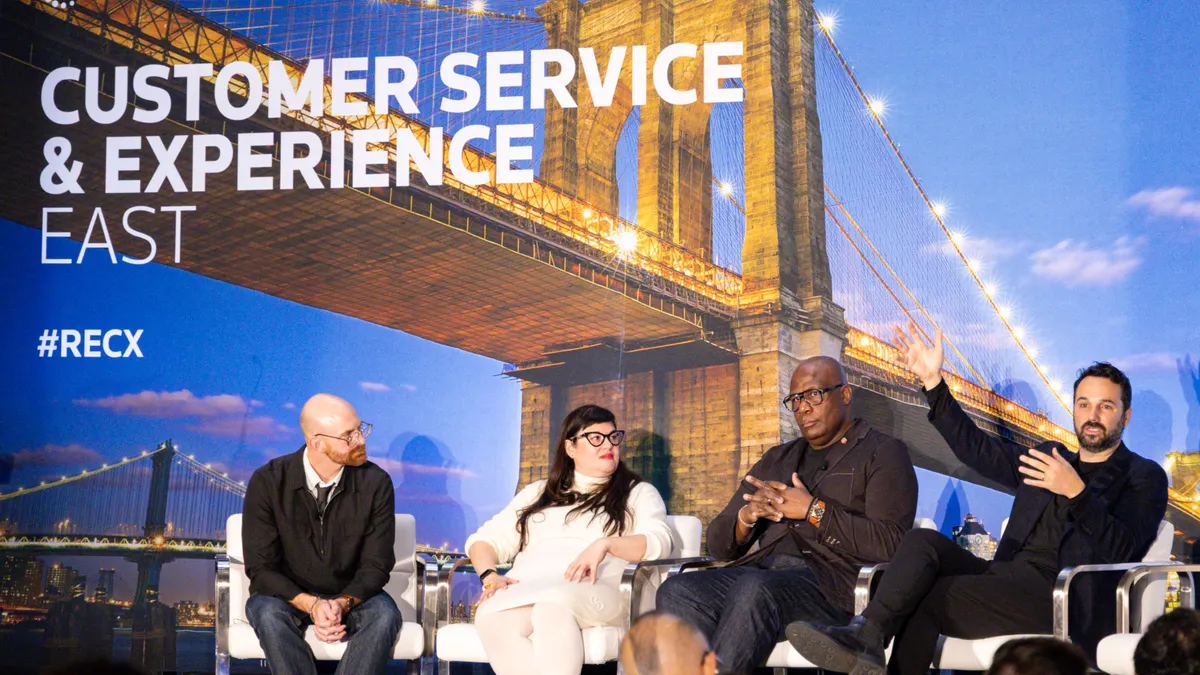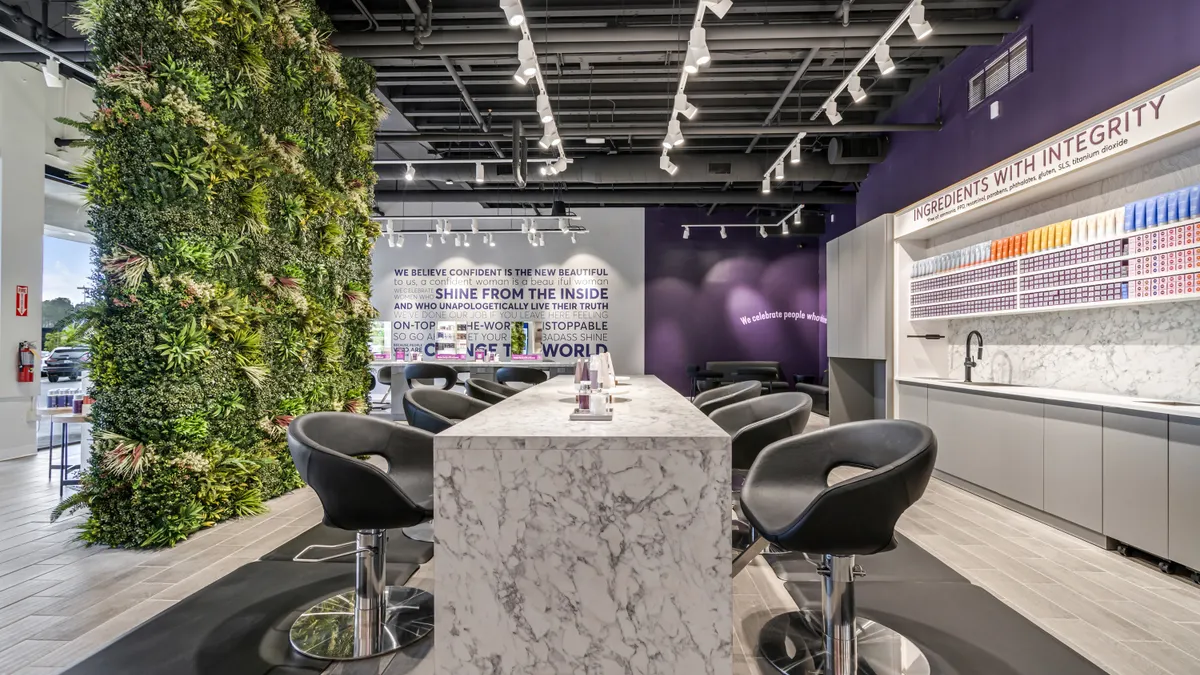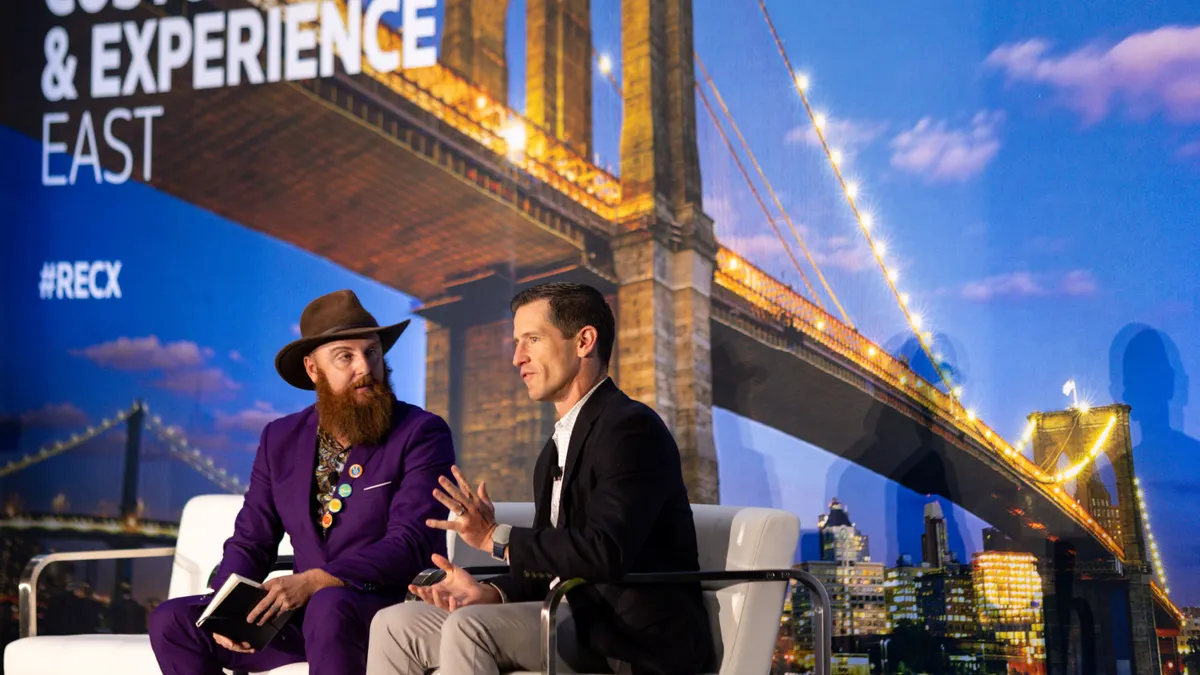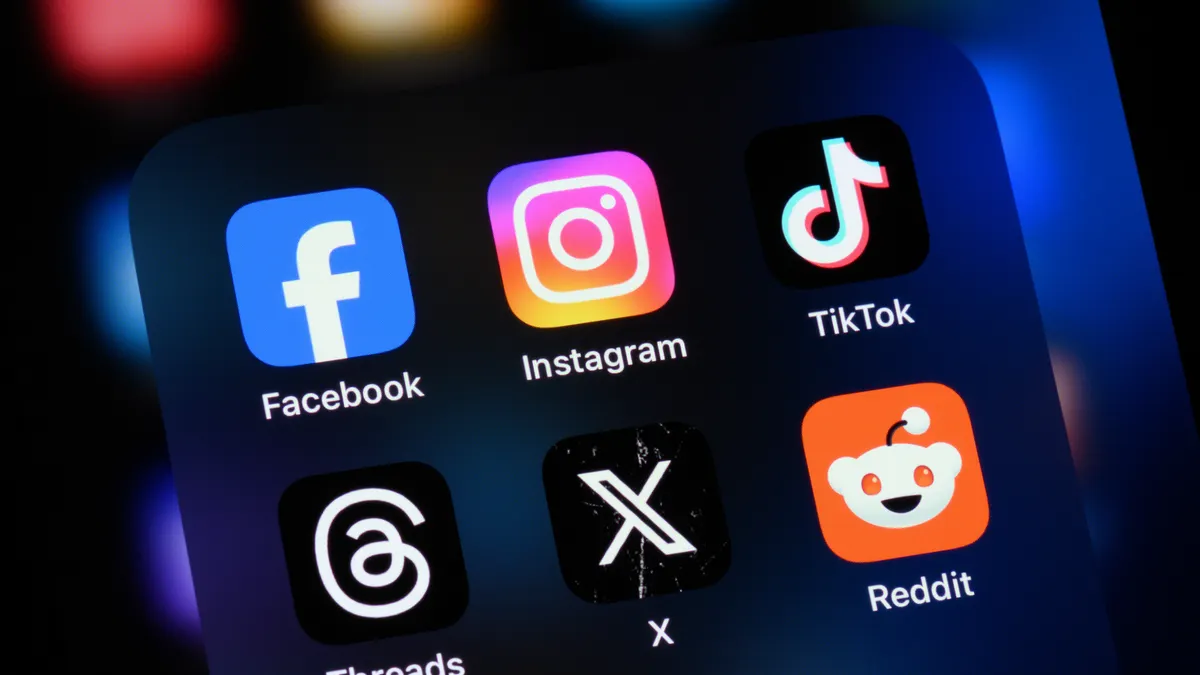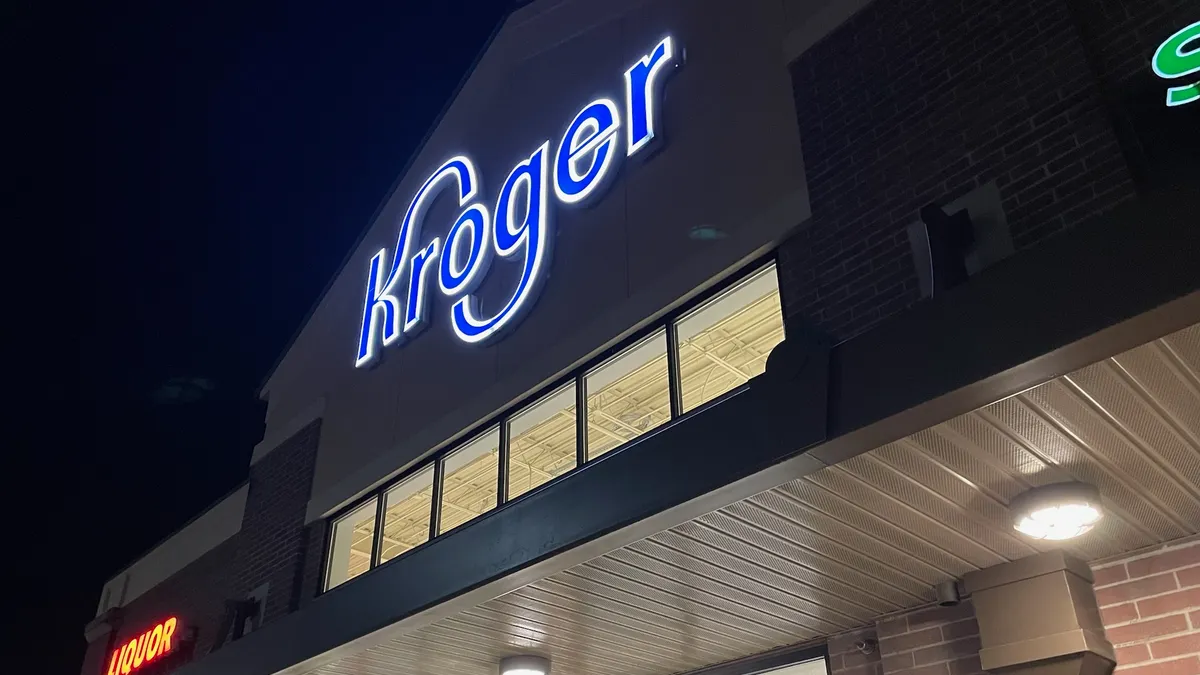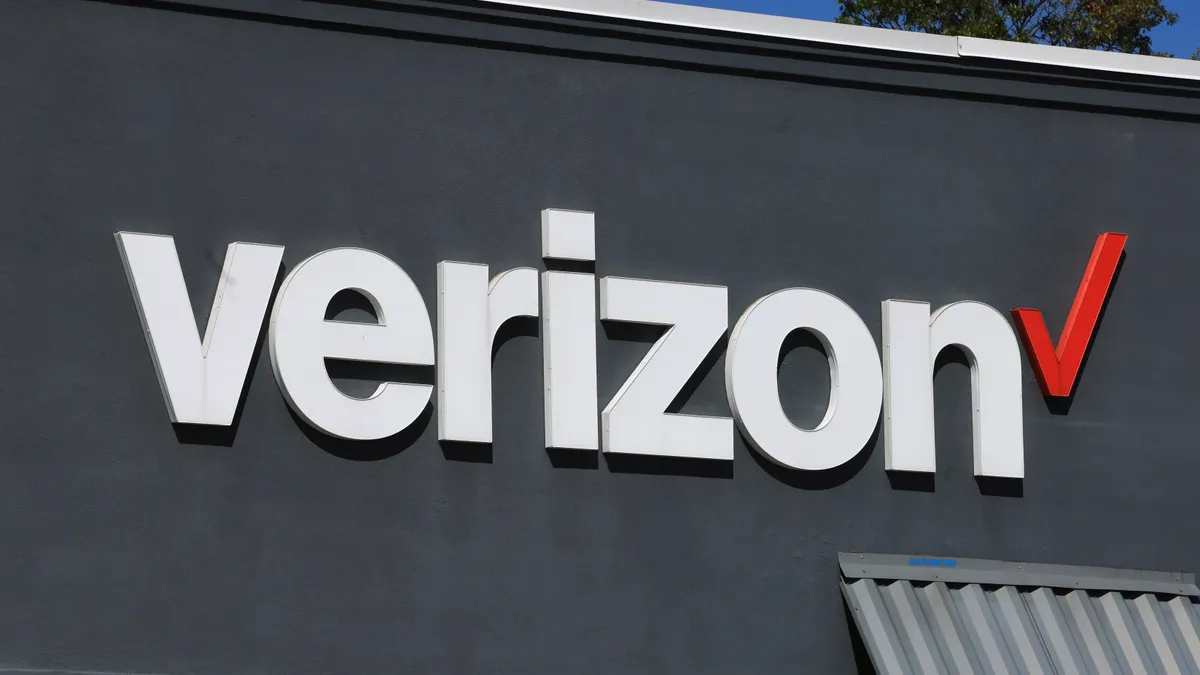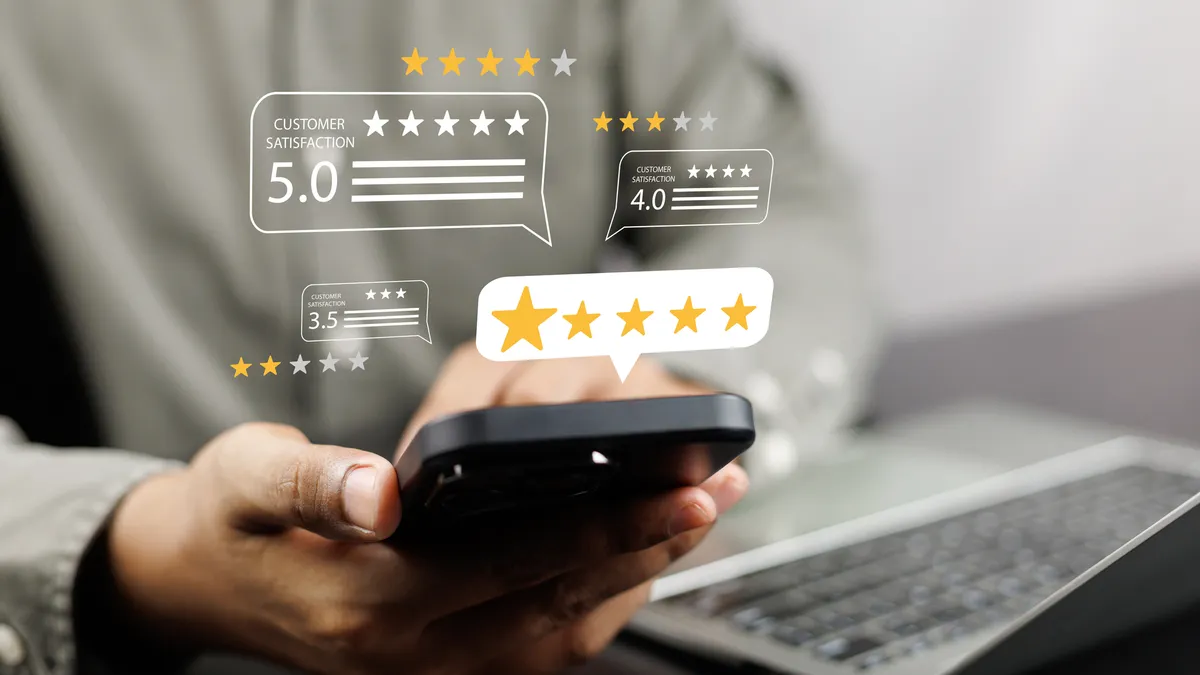You might not think a VP at a record label and an executive who provides work offices would have much in common when it comes to customer experience. You’d be mistaken.
Christina Goldschmidt, VP of product design at Warner Music Group, and Jamie Hodari, who leads CBRE’s building operations and experience and serves as CEO of Industrious, face the same challenge: How can businesses unify data for actionable change?
The two leaders each have access to troves of data, but without clean, unified data and hypotheses, the information can appear chaotic, or worse, meaningless, they shared during a Tuesday panel at Reuters Customer Service and Experience East in New York City.
In the music industry, artists need data to run their businesses, from streaming services and audience performance to how that impacts the royalties they earn. Each of those data points are siloed, and even within those categories silos persist. Streaming data from digital service providers like Spotify or Apple Music, for example, are not unified.
“So for us to help our artists get a full picture of how they're doing and then how to optimize how they're doing, it's a giant data unification problem,” Goldschmidt said. Figuring out how to “manage, how to clean and how to properly caveat that data is sort of a big problem that I work on every day.”
Warner Music Group launched an app for artists in May to solve for that. Pulse WMG provides “a holistic view” of artists’ streaming data, royalties in real time, and how audiences are reacting to the artist’s social media presence, Goldschmidt said.
For CBRE’s Hodari, there are two major data silos to account for: information about the physical world and information about the digital world. The company might have data on a person who walked into a physical building, and separately, it might have data on their digital footprint like how they ended up in this space.
But without unifying those two profiles, the analysis and action the company can take to improve their experience is limited.
At Industrious, a flexible workplace provider which was recently acquired by CBRE, digital data is put in the hands of building managers to improve customer satisfaction and reduce churn. Staff have face-to-face relationships with customers and can apply the insights they have on satisfaction, commute and usage to their interactions to make them seem more personal.
“They've been trained and sort of programmed to research just before the meeting to make that human interaction so much better,” Hodari said.
From hypothesis to action
Siloed data isn’t the only thing holding CX leaders back, Hodari said. Most are lacking a hypothesis.
“I think oftentimes people collect data, and they're getting the surface level stuff because there isn't enough of a hypothesis,” he said.
“That would be my No. 1 thing is this action-oriented approach that's about hypothesis testing and the application of the scientific method to the data the business collects, versus this kind of ‘Let it wash over me, and the patterns will emerge,’” he said.
Industrious wasn’t immune from that attitude.
“For many years, we thought that the data around whether people like their office or not, and how often they come in was chaotic,” Hodari said. “Just for whatever reason, you would think there'd be a correlation, and there was no correlation. There'd be people who were constantly saying, ‘This place is amazing,’ and coming a day and a half.”
Finally, someone shared a theory. Perhaps satisfaction and office usage were impacted by commute time. The business gathered home addresses and controlled for commute times.
Suddenly, a clearer picture emerged. People who lived 40 minutes away and loved their workplace came in twice as often as those who lived 40 minutes away and didn’t like it, Hodari said. Someone who lived three minutes away and didn’t like their office still walked into the office more often than someone who lived further away.
“It was just an example where the data looked completely meaningless, until there was an actual hypothesis we tried to test against it that enabled us to figure out what you would need to do to clean up the data and make it actionable,” he said.
It also allowed the company to dig into other data it had on the events it offered customers and whether it could encourage more people to come into the office.
When the business offered networking events like resume drops or coding spaces, there was “no correlation between that and how often people came in once you control the commute,” Hodari said. However, Industrious also offered events unrelated to work like lunch and learns with a psychologist or early childhood development expert. It found that the people who started attending those events “started going to work a full day more often per week.”
Warner Music Group’s Goldschmidt also took a hypothesis approach. Knowing that live touring is growing at a greater rate than the overall music industry and that musicians make more money from touring than they do from streaming or record sales, she hypothesized that artists don’t have enough information about where to tour to have the greatest impact.
While that’s under the purview of a business manager, not a record label, qualitative data proved that it was a pain point, and Goldschmidt saw an opportunity to offer data and insights.
The record label was able to look at its data, analyze social media and determine emerging markets with “really engaged super fan bases” that then help make musicians’ tours better, she said.


